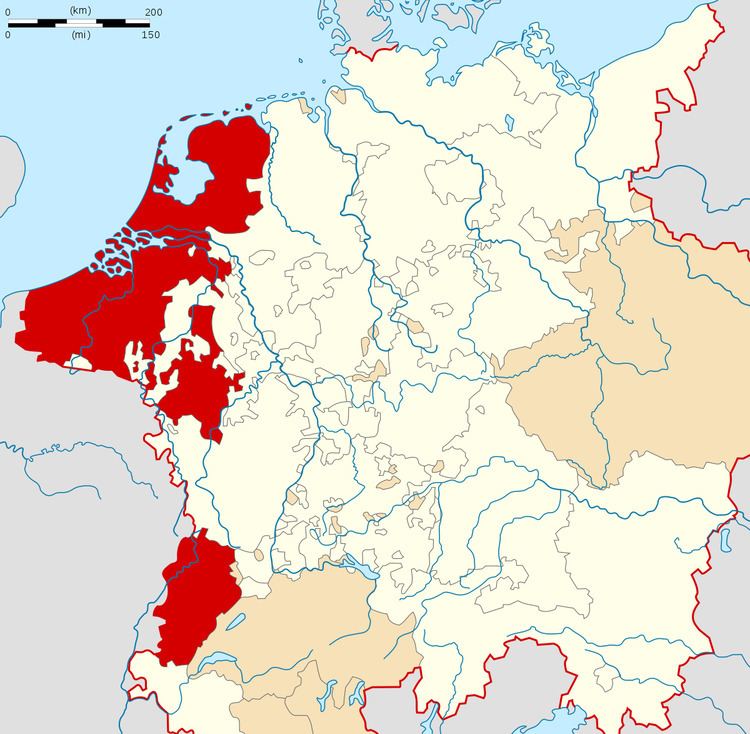 | ||
The Margraviate of Antwerp (or Mark of Antwerp) consisted since the eleventh century of the area around the cities of Antwerp and Breda.
Contents
Origin
Under Otto II, emperor of the Holy Roman Empire, several marches were created along the border with West Francia (this border coincided with the river Scheldt). Originally the mark was restricted to the borders of the Scheldt, in 994 Ansfried of Utrecht added Toxandria to the mark.
History
In the 11th century the mark of Antwerp was one of the fiefs of the duke of Lower Lorraine. Godfrey of Bouillon received the mark in 1076 from emperor Henry IV. After his death during the siege of Akko in the First Crusade, Henry I of Limbourg was appointed as margrave.
In 1106 the duchy of Lower Lorraine and the margraviate were united. After the abolishment of the duchy in 1190 during the Diet of Schwäbisch Hall by emperor Henry VI only its titles remained and these were given to the Duke of Brabant.
Composition
The margraviate consisted (after the loss of Breda) of the cities of Antwerp, Herentals and Lier and the quarters of Arkel, Rijen, Geel, Zandhoven, Turnhout and Hoogstraten.
